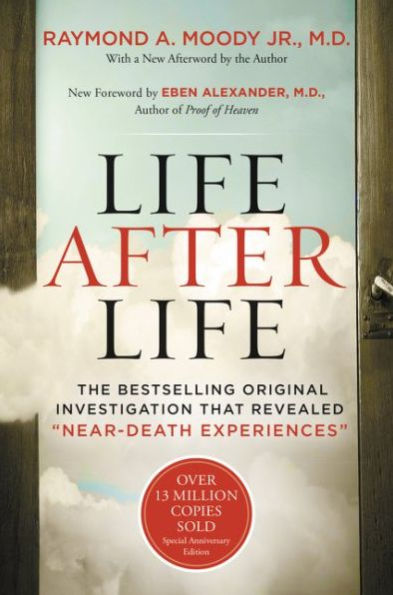This year’s Presidential Election has left television viewers, talk radio listeners, social media followers, and newspaper readers reeling from too-much-information overload. In the same way diners welcome a juice fast after an all-you-can-eat buffet (or small children benefit from a screaming meltdown after a day at a theme park), our American brains are in desperate […]
In Life After Life Raymond Moody investigates more than one hundred case studies of people who experienced "clinical death" and were subsequently revived. First published in 1975, this classic exploration of life after death started a revolution in popular attitudes about the afterlife and established Dr. Moody as the world's leading authority in the field of near-death experiences. Life after Life forever changed the way we understand both death -- and life -- selling millions of copies to a world hungry for a greater understanding of this mysterious phenomenon.
The extraordinary stories presented here provide evidence that there is life after physical death, as Moody recounts the testimonies of those who have been to the "other side" and back -- all bearing striking similarities of an overwelming positive nature. These moving and inspiring accounts give us a glimpse of the peace and unconditional love that await us all.
In Life After Life Raymond Moody investigates more than one hundred case studies of people who experienced "clinical death" and were subsequently revived. First published in 1975, this classic exploration of life after death started a revolution in popular attitudes about the afterlife and established Dr. Moody as the world's leading authority in the field of near-death experiences. Life after Life forever changed the way we understand both death -- and life -- selling millions of copies to a world hungry for a greater understanding of this mysterious phenomenon.
The extraordinary stories presented here provide evidence that there is life after physical death, as Moody recounts the testimonies of those who have been to the "other side" and back -- all bearing striking similarities of an overwelming positive nature. These moving and inspiring accounts give us a glimpse of the peace and unconditional love that await us all.

Life After Life: The Bestselling Original Investigation That Revealed "Near-Death Experiences"
208
Life After Life: The Bestselling Original Investigation That Revealed "Near-Death Experiences"
208Related collections and offers

Product Details
| ISBN-13: | 9780061967986 |
|---|---|
| Publisher: | HarperCollins Publishers |
| Publication date: | 12/15/2015 |
| Sold by: | HARPERCOLLINS |
| Format: | eBook |
| Pages: | 208 |
| Sales rank: | 16,947 |
| File size: | 616 KB |
About the Author
Customer Reviews
Explore More Items
The bestselling author of Your Erroneous Zones, Pulling Your Own Strings, and Wisdom of the Ages combines psychological insights and guidelines for achieving spiritual fulfillment to present a
THE RECORD-BREAKING, #1 NEW YORK TIMES BESTSELLER – OVER 35 MILLION COPIES SOLD
The first book by Wayne Dyer, author of the multimillion-copy bestseller Pulling Your Own Strings and national
Wayne Dyer, psychotherapist and world-famous author of worldwide bestsellers Your Erroneous Zones and Pulling your own Strings, shows you how to improve quality of life by tapping into the power
From the inspirational leader and author of the international bestsellers Your Sacred Self and Your Erroneous Zones comes this mind-awakening guidebook for making your desires
• Mas de cinco millones de copias vendidas en los Estados Unidos
• Traducido a 38 idiomas en todo el
Una preciosa colección de oraciones, meditaciones guiadas y una prosa poderosa que inspirará y transformará tu vida.
Ter consciência de que nenhuma outra pessoa pode ser responsável pela sua felicidade e compreender que apenas assim é possível alcançar um relacionamento sólido,
Based on over twenty-five years of spirit communication and thousands of professional readings, world-famous medium James Van Praagh shares with readers the personal regrets, misgivings, remorse,
"Journey of Souls and Destiny of Souls are two of the most fascinating books I have ever read."—Academy Award-Winning Actress and Author Shirley MacLaine
A pioneer in uncovering the secrets of
I am just an ordinary woman now sharing this totally unexpected yet extraordinary adventure! Awakening within
As a cardiologist, Pim van Lommel was struck by the number of his patients who claimed to have near-death experiences as a result of their heart attacks. As a scientist, this was difficult for him to
